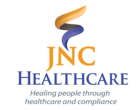
Budget [Healthcare Compliance Tips]



Employee Training [Healthcare Compliance Tips]



Budget [Healthcare Compliance Tips]



Employee Training [Healthcare Compliance Tips]
Policies & Procedures [Healthcare Compliance Tips]


Develop written compliance policies and procedures.
Per the SAI Global and Strategic Management “2019 Healthcare Compliance Benchmark Report,” they found that:
- 39% of entities manage their compliance documents manually.
- 45% of entities use document management software or systems.
- 17% of entities use comprehensive governance, risk, and compliance software.
As shared in our “ resource library,” we stress the importance of developing written policies and procedures. As well as, ensure it is fully functioning and that your employees are following it verbatim.
Remember, the OIG can tell who left their compliance plan on the shelf “to collect dust.” So, now is the time to dust your manuals or compliance software off to ensure everything is up-to-date at least annually.
After the update, be sure to share the information with the entire practice in the form of a refresher course. It would help if you also made the policies and procedures widely accessible in numerous places that your staff can find quickly (i.e., binder in common area, bulletin board, intranet, etc.).
**The opinions and observations from the group/author are not a promise to exempt your practice from fines and penalties. Research, modify, and tailor the advice to fit your specialty.









